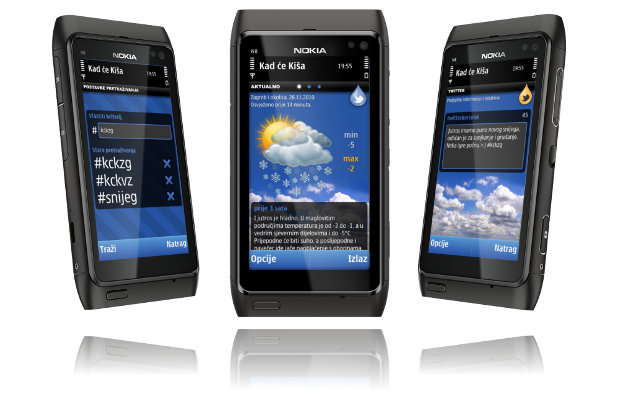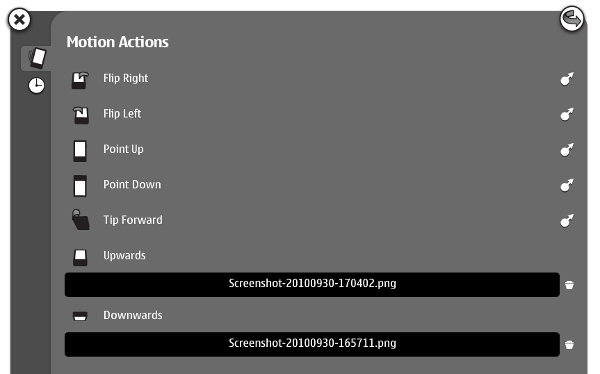
It seems you can’t turn anywhere today without some mobile app hitting you over the head. As it became so common and used everyday, it’s definitely time to continue a well known series and to see how to create one.
Latest blog post: How it’s made – Mobile application

It seems you can’t turn anywhere today without some mobile app hitting you over the head. As it became so common and used everyday, it’s definitely time to continue a well known series and to see how to create one.
Last month Nokia launched the improved version of the Flowella prototyping tool. The changes are not big, but are important. They can be grouped like this:
A developer/designer tool can have all the features in the world, but if you can’t save and later continue your hard work the tool will be discarded very soon. Earlier version of Flowella sometimes had trouble saving your current progress. The workflow could be messed up after loading or the connections between frames could be lost - very frustrating. The new version doesn’t have any of those problems. Saving, loading and exporting works as expected.
The old way to go to the next screen was to click on the specified area. Although this was sufficient for basic testing, it doesn’t really reflect the way people use mobile phones. New Flowella adds more triggers.

The first new triggers is accelerometer. The prototype can now respond to multiple motions. Just drag the arrow on the right side to the target screen.

The second new trigger. It is great for rudimentary animation and non-interruptible actions (updating, authorizing, etc).
 Beside exporting to WRT and Flash Lite, you can now export to Qt Quick. Qt Quick is the new feature of Qt 4.7 and it allows you to create UI layout and behavior by using a language based on JavaScript. No C++, at least for the not-too-complicated stuff. If you’re familiar with web technologies, you’ll get around very quickly.
Beside exporting to WRT and Flash Lite, you can now export to Qt Quick. Qt Quick is the new feature of Qt 4.7 and it allows you to create UI layout and behavior by using a language based on JavaScript. No C++, at least for the not-too-complicated stuff. If you’re familiar with web technologies, you’ll get around very quickly.
Here is the sample of the QML code generated by Flowella for one of the screens. It looks almost the same as the JavaScript object literal.
import Qt 4.7
Item {
property string jumpToNode: ""
signal jumpTo
id: node
focus: true
Image {
source: "Screenshot-20100930-165711.png"
}
Timer {
id: timerTrigger
interval: 500 /* Note: intervals must be > 0 for the timer to work */
running: true
repeat: false
onTriggered: {
jumpToNode = "3E579516-E275-5DF8-9AFE-99E9A6FC66B9.qml"
node.jumpTo()
}
}
}

If you’re designing or prototyping an application for Nokia N900, this resource could be very helpful. N900frame_template.zip contains a SVG file with a N900 background (just like in the header photo), a status bar and a 800x480px workspace so you can easily export your work in native screen size and test it in one of available prototyping tools (like Flowella).
 The frame was created in Inkscape, but you can easily import it in some other vector drawing program (AI, CorelDRAW) or use raster graphics in the bundle (N900 hardware and status bar pictures) in Photoshop or GIMP. All the sizes are pixel perfect so you can use it to create quick mock-ups or the final design.
The frame was created in Inkscape, but you can easily import it in some other vector drawing program (AI, CorelDRAW) or use raster graphics in the bundle (N900 hardware and status bar pictures) in Photoshop or GIMP. All the sizes are pixel perfect so you can use it to create quick mock-ups or the final design.
The SVG file contains layers with normal and full-screen grids that are helpful for quick prototyping. Status bar can be easily removed so the full screen canvas awaits you.
Whew, finally found some time to write another post. This time we’ll be using Maemo’s alarm framework to do, well, almost whatever we want at a specific time, or even repeatedly at specific times :) So let’s get to it.
Once upon a time I thought that the desktop browsing experience on the mobile phone is a possibility. And then I noticed…

Flowella is a simple but powerful tool by Nokia that lets you create application prototypes directly from design suites or even scanned hand-drawn sketches.
On March 15th Tardigrade had won on the Maemo Challenge that was being held on first Mobile Monday in Croatia. The winning application was Ginkg-o-minder (concept name) and the reward was N900 device to build and test the application on. There are many reviews of N900 spanning from a few to a dozen pages long containing all the technical details you can imagine. I will not talk about that, but will give you some usability information. Here is my opinion after playing with it for a while.